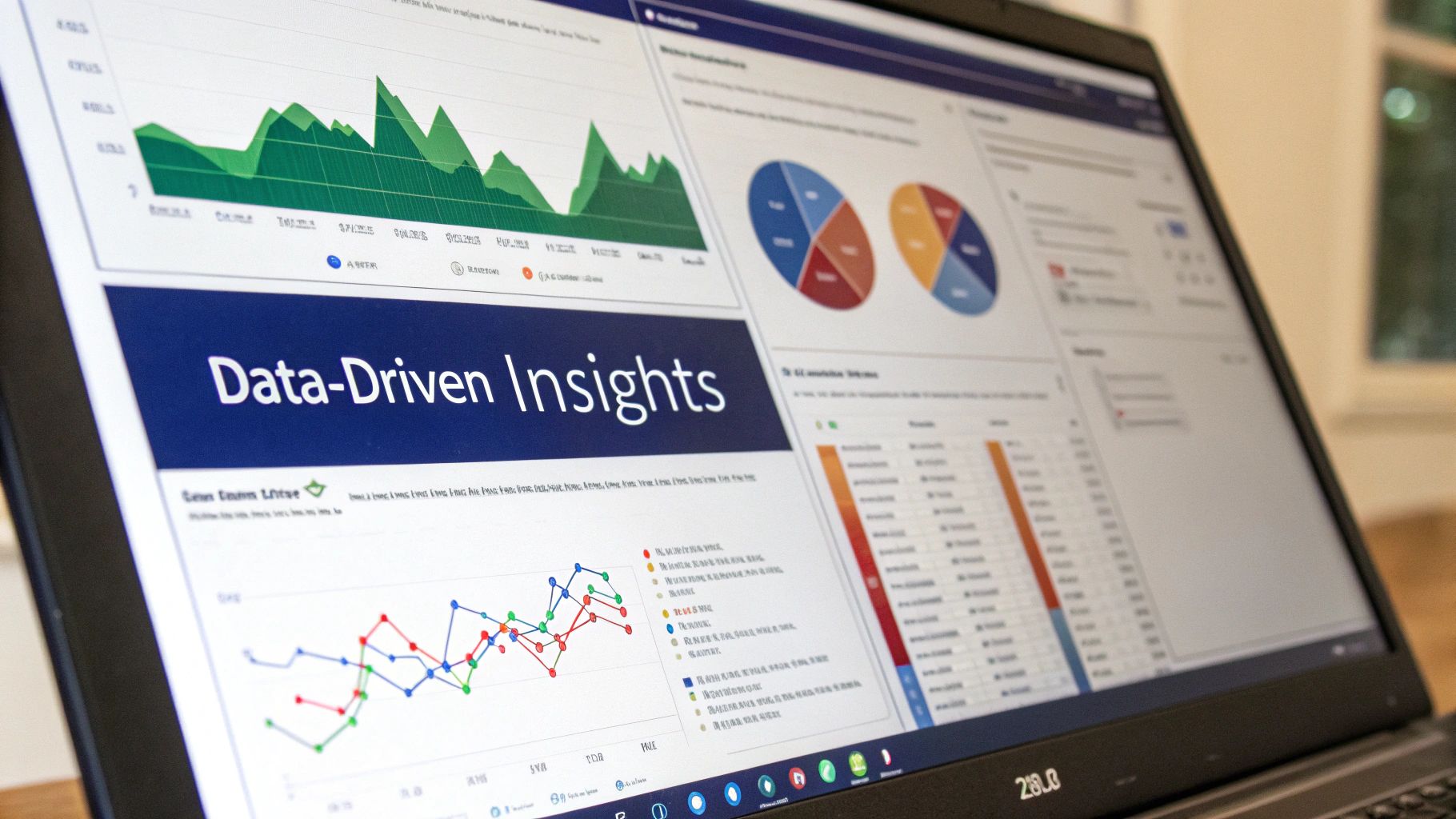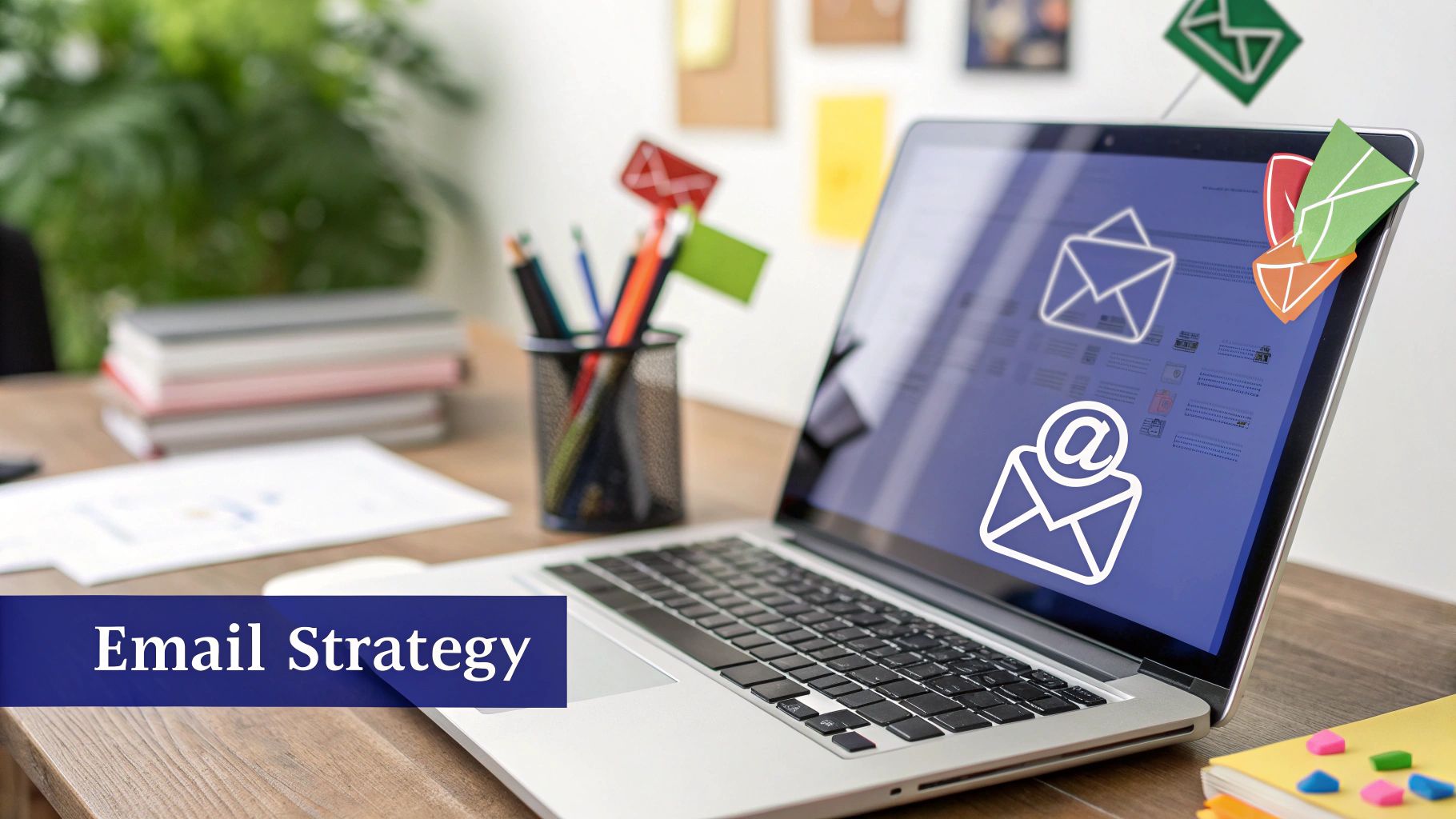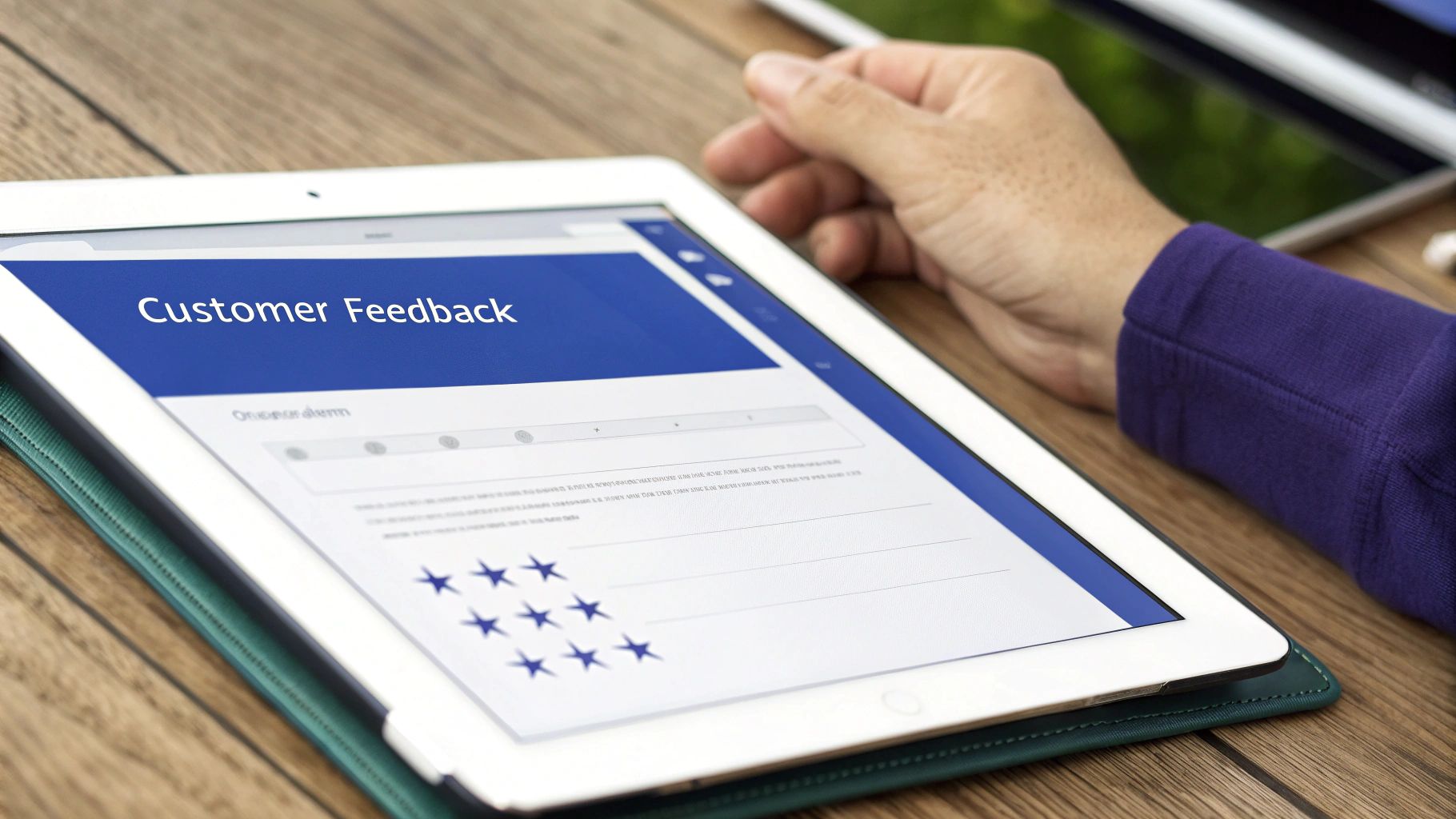Email Marketing: The Hidden Growth Engine

When it comes to generating real business results, email marketing consistently delivers outstanding returns compared to other marketing channels. The key is moving beyond basic newsletters to create personalized email experiences that resonate with subscribers. For instance, sending targeted promotions based on a customer's past purchases is far more effective than generic blast emails. This focused approach makes all the difference in driving engagement and conversions.
Building a Responsive Email List
Success in email marketing starts with attracting the right subscribers who truly want to hear from your brand. The best way to grow your list is by offering compelling incentives – think exclusive content, trial periods, or early access to deals. Keep your signup forms simple and clean too. Would you rather fill out a cluttered 10-field form or a quick name and email capture? Making it easy for people to join your list is essential for steady, sustainable growth.
Segmentation: The Key to Personalized Messaging
As your subscriber base grows, breaking it into focused segments becomes critical for delivering relevant messages. Group subscribers based on factors like purchase history, demographics, or website activity. This allows you to craft highly targeted campaigns – like sending product recommendations based on past buys or special offers aligned with specific interests. When you connect with subscribers on this personal level, they're much more likely to engage and convert.
Automation: Streamlining Your Email Efforts
Smart automation is what makes email marketing scalable and efficient. Set up automated sequences for key touchpoints like welcome emails, cart abandonment follow-ups, and post-purchase communication. This keeps leads nurtured and customers engaged without constant manual work from your team. Picture a series of onboarding emails that guide new subscribers toward their first purchase – that's the power of automation done right.
Measuring What Matters: Beyond Open Rates
While open rates provide basic insight, the metrics that really matter are those tied to business goals – click-throughs, conversions, and revenue generated. Track which email content drives the most engagement and sales. Monitor key conversion points like purchases, downloads, and event signups to understand your true impact. The data shows email marketing drives an average return of $40 for every $1 spent, proving its value as a growth driver. Focus on these bottom-line metrics to continually refine your strategy and maximize results.
Social Media Marketing That Actually Converts

While email marketing excels at direct communication, social media provides unique opportunities to connect with your audience and build lasting brand awareness. Success requires more than random posting – you need a thoughtful strategy that combines compelling content, genuine engagement, and smart promotion.
Crafting Engaging Content That Cuts Through the Noise
Picture your social media feed as a bustling marketplace where countless brands vie for attention. To stand out, your content must deliver real value that connects with your audience's needs and interests. Skip the generic product posts in favor of authentic behind-the-scenes glimpses into your company culture, customer success stories, and practical tips that solve common problems. Features like Instagram and Facebook Stories have proven particularly powerful for engagement, with most marketers reporting strong results. Their more candid, unpolished nature helps forge deeper connections with followers.
Strategic Paid Social: Maximizing Your Budget's Impact
While organic reach is important, paid social advertising opens doors to new audiences and amplifies your message. But success requires more than just throwing money at ads. The key is using data to laser-focus your targeting on the demographics, interests and behaviors most likely to convert. Think of it like using a magnifying glass to concentrate sunlight – you want to direct your resources where they'll have maximum impact. Regular A/B testing of ad creative, copy and targeting helps optimize performance and ROI over time.
Blending Organic and Paid Efforts for Sustainable Growth
The most effective social strategies combine organic relationship-building with strategic paid promotion. Your organic content builds community and trust, while paid campaigns extend reach and drive specific actions. This creates a powerful growth cycle – engaging organic posts can be boosted to reach more people, while paid campaigns bring new followers who then engage with your organic content. The result is steady progress toward building not just an audience, but an engaged community that fuels business growth.
Measuring What Matters: Beyond Vanity Metrics
While follower counts and likes provide surface insights, real success comes from tracking how social efforts impact business results. Focus on metrics like website traffic from social channels, conversions from social campaigns, and social media's contribution to revenue. This data helps identify which approaches actually move the needle. For example, if certain content drives traffic but few conversions, you can refine your calls-to-action and landing pages. Facebook consistently ranks as one of the top platforms for measurable ROI, making it especially valuable. Regular analysis and optimization based on performance data ensures your social marketing delivers real business value.
SEO: Building Digital Authority That Lasts
At its core, Search Engine Optimization (SEO) is about building lasting visibility and authority online. Success comes not from chasing quick wins, but from developing a strong foundation that connects your brand with the right audience at key moments. Let's explore the essential elements that make SEO work.
Content is King, Engagement is Queen: Creating Content That Converts
Quality content forms the heart of effective SEO. Think of your website like a physical store – would you fill your shelves with outdated, irrelevant products? The same principle applies online. Your site needs compelling content that speaks directly to your audience's needs and keeps them coming back. Blog posts, infographics, and videos can educate and engage visitors in meaningful ways. When you consistently deliver value, search engines take notice and reward your site with better visibility.
Keyword Research: Understanding the Language of Your Audience
Smart keyword research helps you speak your customers' language. Rather than targeting broad terms like "jewelry," which cast too wide a net, focus on specific phrases that match search intent. For instance, "handmade silver necklaces for women" connects you with buyers actively looking for those exact items. This targeted approach brings in visitors more likely to convert into customers.
Technical SEO: Building a Strong Foundation
Just as a house needs solid construction, your website requires sound technical SEO to perform well. Site speed, mobile optimization, and clean URL structure all affect how easily search engines can crawl and understand your content. Technical problems are like cracks in your foundation – they can seriously limit your site's potential. Regular technical maintenance keeps your SEO efforts on track.
Measuring Success: Focusing on Business Impact
While rankings matter, the true measure of SEO success lies in business results – organic traffic, conversions, and revenue growth. SEO is a long-term investment that pays off over time, with studies showing an average ROI of 2200%. By creating genuinely helpful content, maintaining technical excellence, and tracking meaningful metrics, you can build lasting authority that delivers real business value.
Video Marketing: Converting Viewers Into Loyal Customers

While SEO builds long-term visibility, video marketing delivers immediate impact by connecting with audiences in powerful ways. The goal isn't to create viral hits – it's about developing meaningful content that speaks directly to your target customers and moves them to action. Success comes from aligning video initiatives with clear business objectives and sharing content where your audience already spends their time.
Crafting Compelling Video Content That Converts
The key to creating videos that drive results is understanding what your viewers actually want and need. Your content should solve real problems and provide clear value, whether through step-by-step tutorials, authentic behind-the-scenes footage, detailed product demonstrations, or genuine customer stories. For example, a software company can demystify complex features through quick how-to videos, while a fashion brand might inspire purchases through stylish collection previews. The focus should always be on addressing customer pain points in an engaging way.
Choosing the Right Platform for Your Video Content
Smart platform selection makes all the difference in reaching the right viewers. YouTube excels as a hub for evergreen educational content that can attract organic traffic over time, with users consuming over one billion hours of video daily. Meanwhile, platforms like Instagram and Facebook work better for building community through short-form content and live broadcasts. Adding video directly to your website product pages and landing pages can also boost trust and conversions by showing your offerings in action.
Optimizing Your Videos for Search and Discovery
Just like written content, videos need proper optimization to reach their intended audience. This means incorporating relevant keywords in titles, descriptions, and tags that align with what your target viewers are searching for. A well-optimized YouTube video is much more likely to appear in search results, while engaging social content gets prioritized in user feeds. Think of optimization as helping the right people discover your valuable content. The extra effort to get these technical details right pays off in expanded reach.
Measuring the Impact of Your Video Marketing Efforts
Look beyond basic view counts to assess how videos support your core business goals. Track metrics that matter – website traffic, sales conversions, lead generation, and viewer engagement with calls-to-action. If videos attract views but don't drive desired actions, test different approaches to content and CTAs. Regular performance analysis helps refine your strategy over time. Focus on the numbers that show real business impact rather than vanity metrics that don't connect to revenue. Success comes from continuously learning what resonates with your audience and adjusting accordingly.
PPC Advertising: Maximizing Return on Ad Spend

Getting quick results from your marketing efforts is vital for growing your business. While SEO and content marketing build long-term visibility, Pay-Per-Click (PPC) advertising delivers immediate traffic and sales when done right. Smart PPC management isn't about spending more – it's about spending wisely. With careful planning and ongoing optimization, PPC campaigns often achieve a 200% return on investment within just 4 months.
Campaign Structure: Building a Solid Foundation
Think of PPC campaign structure like organizing a well-designed store. You wouldn't mix all products together randomly – you'd group similar items logically. The same principle applies to PPC. Break your campaigns into focused ad groups targeting specific keywords and audiences. For example, a shoe retailer would create separate campaigns for running shoes, dress shoes, and sandals. Each campaign then splits further into targeted ad groups like "men's running shoes" or "women's hiking boots." This detailed organization leads to more relevant ads and landing pages, improving your quality scores while reducing costs.
Audience Targeting: Reaching the Right Customers
Success in PPC comes from showing your ads to people most likely to buy, not just anyone who might click. Modern PPC platforms offer powerful targeting options based on demographics, interests, online behavior, and search intent. It's like fishing – using the right bait in the right spot catches more fish than casting a wide net randomly. By carefully selecting who sees your ads, you ensure your budget goes toward reaching genuine potential customers.
Creative Optimization: Crafting Compelling Ads
Great targeting only works when paired with attention-grabbing ads that drive action. Your ad copy must speak directly to your audience's needs and motivations. Testing different headlines, descriptions and calls-to-action reveals what messages resonate best. For instance, comparing "Save 20% Today" versus "Limited Time: 20% Off" shows which phrase drives more clicks. Strong visuals are equally crucial – eye-catching images and videos boost engagement rates substantially. Learn more about converting clicks to customers in our guide to How to Master Landing Page Optimization for Conversions.
Performance Tracking and Analysis: The Key to Continuous Improvement
Regular monitoring and optimization keep PPC campaigns performing at their peak. Track essential metrics like click-through rate, conversion rate, and cost per conversion to understand what's working. Use this data to refine your targeting, adjust bids, and improve ad creative over time. Just as a gardener tends their plants daily, PPC success requires constant care and adjustment. This ongoing optimization process helps your campaigns deliver consistently strong returns while supporting overall business growth. By mastering campaign structure, audience targeting, compelling creative, and data-driven optimization, you can turn PPC advertising into a reliable source of new customers.
Creating Your Integrated Digital Marketing Ecosystem
Building a successful digital marketing strategy is like conducting an orchestra – each individual element must work in harmony to create something greater than the sum of its parts. While we've explored tactics like email, social media, SEO, video, and PPC advertising individually, the real power comes from blending them into a cohesive system that delivers measurable results.
Orchestrating Your Channels: A Symphony of Marketing Efforts
Smart digital marketing requires careful coordination across channels, not just random tactics. For example, you might promote a new SEO-optimized blog post on social media, use it to grow your email list with exclusive offers, then track conversions through targeted PPC campaigns. When channels complement and reinforce each other this way, the impact multiplies significantly.
Cross-Channel Measurement and Attribution: Understanding the Customer Journey
To improve your marketing, you need clear insights into how customers interact with your brand across touchpoints. Through attribution modeling, you can identify which efforts drive the most value. A customer's path might start with discovering you on social media, include multiple website visits, and end with purchasing through an email promotion. Tracking these interactions helps optimize spending across channels beyond just last-click attribution. For more on analyzing customer data, check out: 7 Effective Ways to Visualize Customer Feedback Data.
Ongoing Optimization: The Never-Ending Cycle of Improvement
Success in digital marketing requires constant fine-tuning based on real performance data. This means regularly testing new approaches, analyzing results, and refining strategies. Like a gardener pruning for optimal growth, you need to continuously optimize your marketing ecosystem by A/B testing ads, adjusting keywords, improving email subject lines, and more based on what the data reveals.
Building a Sustainable Digital Marketing Program
Creating lasting digital marketing success requires a strong foundation. Key elements include:
- Setting Realistic Goals: Begin with achievable targets and expand as you gain momentum
- Allocating Resources Wisely: Focus spending on channels proving the highest ROI
- Building a Strong Team: Invest in skilled professionals who understand digital marketing
- Embracing Flexibility: Stay ready to adapt strategies as conditions change
BugSmash can help streamline your feedback collection and optimization process. Our platform makes it simple to gather insights that improve your digital marketing results. Check us out today to see how we can help you communicate better, work faster, and achieve stronger marketing performance.




